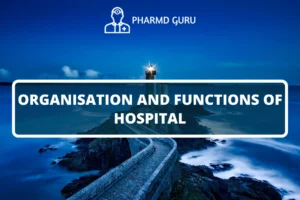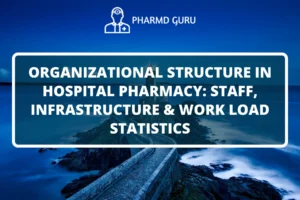The distribution of narcotic and other controlled substances is a critical aspect of the pharmaceutical industry. Strict regulations and protocols are in place to ensure the safe and secure handling, transportation, and delivery of these substances. This article explores the distribution process of narcotic and controlled substances, highlighting the importance of adherence to regulations, security measures, and collaboration among stakeholders.
SCROLL DOWN TO THE BOTTOM OF THE PAGE FOR ACTUAL NOTES
TABLE OF CONTENTS:
- Introduction
- Regulations and Compliance
- Supply Chain Management
- Security Measures
- Collaboration Among Stakeholders
1. Introduction
Narcotic and controlled substances, which include opioids, stimulants, sedatives, and other medications with potential for abuse, require careful management throughout the distribution process. The distribution of these substances involves various entities, including manufacturers, wholesalers, pharmacies, healthcare facilities, and regulatory authorities.
2. Regulations and Compliance
The distribution of narcotic and controlled substances is strictly regulated to prevent diversion, abuse, and illicit activities. Regulatory bodies, such as the Drug Enforcement Administration (DEA) in the United States, enforce regulations to ensure compliance and maintain public safety.
Pharmaceutical manufacturers and distributors must obtain appropriate licenses and registrations to handle and distribute controlled substances. They are required to maintain detailed records of transactions, including the receipt, storage, and distribution of these substances. Compliance with regulations ensures accountability and traceability throughout the supply chain.
3. Supply Chain Management
Efficient supply chain management is crucial in the distribution of narcotic and controlled substances. This includes the procurement, storage, transportation, and delivery of these substances to authorized entities. The supply chain typically involves the following steps:
- Manufacturing: Controlled substances are manufactured by licensed pharmaceutical companies in compliance with regulatory standards. Manufacturers ensure proper labeling, packaging, and documentation.
- Wholesale Distribution: Authorized wholesalers purchase controlled substances from manufacturers and distribute them to pharmacies, hospitals, and other authorized entities. They adhere to regulations regarding storage, transportation, and record-keeping.
- Pharmacy Dispensing: Pharmacies receive controlled substances from wholesalers and dispense them to patients with valid prescriptions. Pharmacists play a crucial role in verifying prescriptions, educating patients about proper use, and preventing misuse.
- Healthcare Facilities: Hospitals, clinics, and other healthcare facilities receive controlled substances for use in patient care. These substances are stored securely, and strict protocols are followed to prevent unauthorized access and ensure accurate documentation.
4. Security Measures
Due to the high risk of diversion and illegal activities associated with narcotic and controlled substances, robust security measures are implemented throughout the distribution process. These measures include:
- Physical Security: Facilities handling controlled substances employ physical security measures such as restricted access areas, surveillance systems, alarms, and secure storage units to prevent theft and unauthorized entry.
- Inventory Control: Controlled substances are subject to strict inventory control. Regular audits and reconciliations are conducted to ensure accurate accounting of these substances, detecting any discrepancies or potential issues promptly.
- Record-Keeping: Detailed records of controlled substance transactions, including receipts, distributions, and returns, are maintained. These records serve as a crucial tool for tracking and monitoring the movement of substances and identifying any irregularities.
- Transportation Security: Transportation of controlled substances requires heightened security measures. This includes the use of tamper-evident packaging, GPS tracking, and adherence to specific transportation regulations to prevent theft or diversion during transit.
5. Collaboration Among Stakeholders
The distribution of narcotic and controlled substances necessitates collaboration among various stakeholders to ensure a seamless and secure process. Key stakeholders involved in this collaboration include:
- Regulatory Authorities: Regulatory bodies such as the DEA, in coordination with other local and international agencies, establish regulations, guidelines, and standards for the distribution of controlled substances. They oversee compliance and take action against non-compliant entities.
- Pharmaceutical Industry: Manufacturers, wholesalers, and pharmacies collaborate to maintain the integrity of the supply chain, including proper handling, storage, transportation, and dispensing of controlled substances.
- Healthcare Professionals: Physicians, pharmacists, and other healthcare professionals play a critical role in prescribing and dispensing controlled substances responsibly. They educate patients about the risks, benefits, and proper use of these substances.
- Law Enforcement: Collaboration between the pharmaceutical industry and law enforcement agencies is essential to prevent illegal diversion and abuse of controlled substances. Timely reporting of suspicious activities and cooperation in investigations contribute to maintaining public safety.
ACTUAL NOTES




